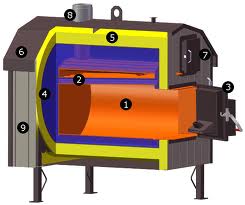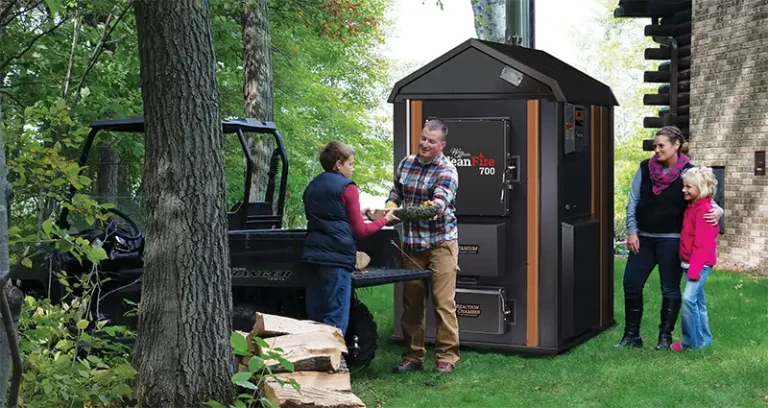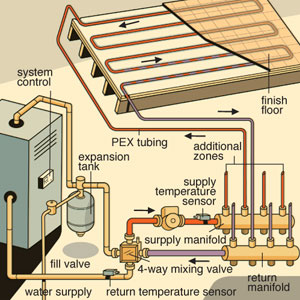I have been in the Fire/Hearth/HVAC/Building industries for over 32 years, and the one thing I know for sure is that I don’t know everything. Our goal as a company is very simple: Help folks cut through the hype and figure out what they need to do in order to accomplish their goal. We just try to tell the truth and give honest advice based on our experience, what works and what may not meet the customer’s expectations. In talking with customers, I’m always learning new things; it’s one of the reasons I love doing what I do.

That being said, I’d like to offer some advice based on my experiences in the heating industry: Over the last few years many folks have called me because they suddenly have an outdoor boiler sitting around their property with a “Condemned: Do No Use” sticker attached to it, despite the unit being only a few years old.
Why, you ask?
The aggressive sales force behind one of the largest outdoor boiler companies in North America. Like many big companies, the almighty dollar comes first for them, rather than the truth. If a homeowner qualifies for financing and is looking for a heating solution- boom, the company’s sales team is there and before the homeowner knows it, they have an installation note for anywhere between $10,000 and $20,000. Did the homeowner know that there was a potential problem with the EPA looming on the horizon for them? Or that their county/state was trying to outlaw outdoor boilers? Nope, and now they have a very expensive lawn ornament.
These folks were not our customers, we like to think we could have prevented their predicament with some friendly advice (there’s no reason for us to sell you a boiler if you can’t use it), but we also can’t blame them. The world of heating is rapidly changing, with new regulations being passed annually by both federal and state governments, so it can be hard to keep up. My hope is that Obadiah’s can lay a foundation for you to make an informed choice.
So why all the rules against outdoor boilers? Simply put, most don’t burn very clean and just smolder all day long. That, combined with a customer who has never burned wood before (or worse, someone who has burned trash and thinks they now have an incinerator), makes for some very unhappy neighbors- especially if they have any kind of respiratory issues. Some boiler designs are just flat-out unable to burn cleanly, on account of them never getting hot enough, and this is the first important thing to remember.
To burn clean, wood needs to burn very hot. The hotter a boiler can burn, the cleaner the burn will be. Outdoor non-gasification boilers do not burn very hot.
As you can see in the diagram, a non-gasification boiler operates by setting a firebox and heat exchanger in a steel casing and filling it with water (the water jacket). The idea is that the water will become heated, which you can then circulate back to your home through underground pipes.

However, it is next to impossible to achieve the kinds of temperatures needed for a clean burn with this setup. Water will always act as a heat sink and absorb most of the heat needed for total combustion. Most outdoor non-gasification boilers operate this way, and there’s no getting around it. In my opinion, unless you live in Northwest Montana or a wide open rural area where lots of smoke is still carbon-neutral, you should stay away from this kind of boiler.
If you chose a non-gasification outdoor boiler, there are some very important things to consider. First and foremost, your fuel source. You need to burn good, properly seasoned wood; if you plan on dumping your firewood somewhere in your yard and digging it out in the dead of winter to throw in the boiler, you’ll be sadly disappointed with the results. Wet, green wood burns poorly, smells terrible, creates creosote in the chimney (a serious fire hazard) and more than half of the BTUs are consumed trying out the wood so it can combust. It doesn’t matter how efficient your boiler is, if you use bad fuel you will get bad results. Don’t do it.

Also, the further away you locate the boiler from your home, the longer the trench is that someone needs to dig to bury the lines that run hot water back to the house. Those lines usually consist of two PEX pipes wrapped with insulation and stuffed in a long black corrugated pipe. These materials run between $5-10 per foot, with higher end foam-injected material going for $10-20 per foot.
As you can see, you can’t just throw money at a boiler, burn whatever you want, and expect to get great heat without effort or consequence. An outdoor boiler could be the perfect way to heat your home, but don’t get taking in by sales hype: Not all types of boilers are practical for everybody, and if you’re not sure, give Obadiah’s a call. We’ll tell you what works best for your setup, but if we can’t help you find what you need, we’ll make sure you find someone who can.
– Woody Chain, Obadiah’s Woodstoves






